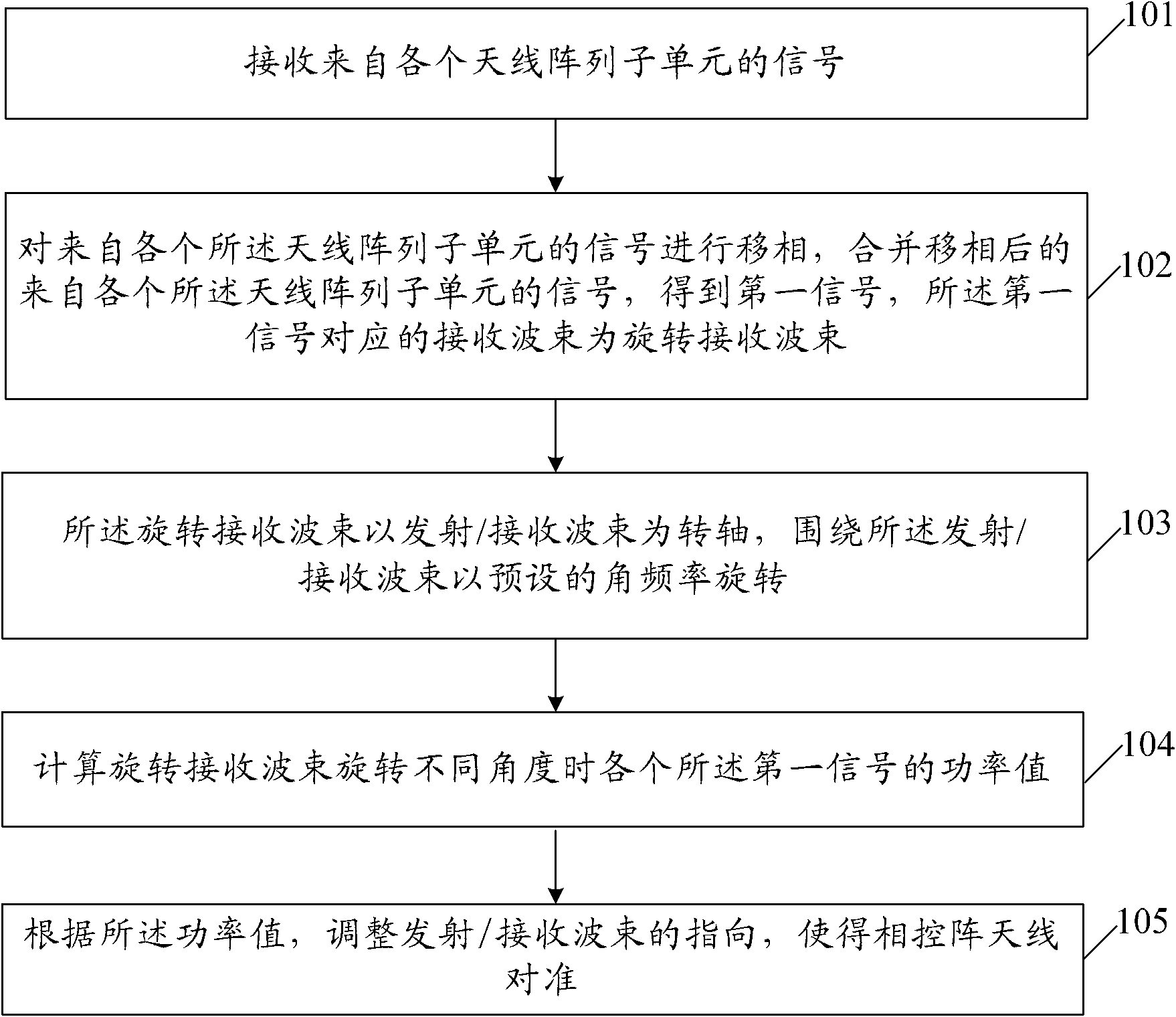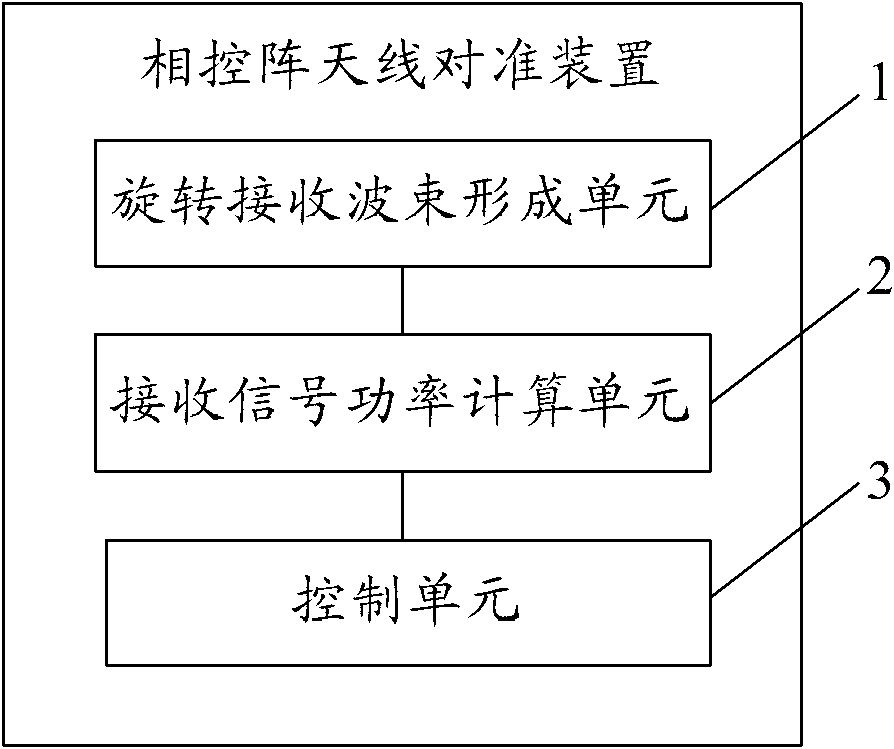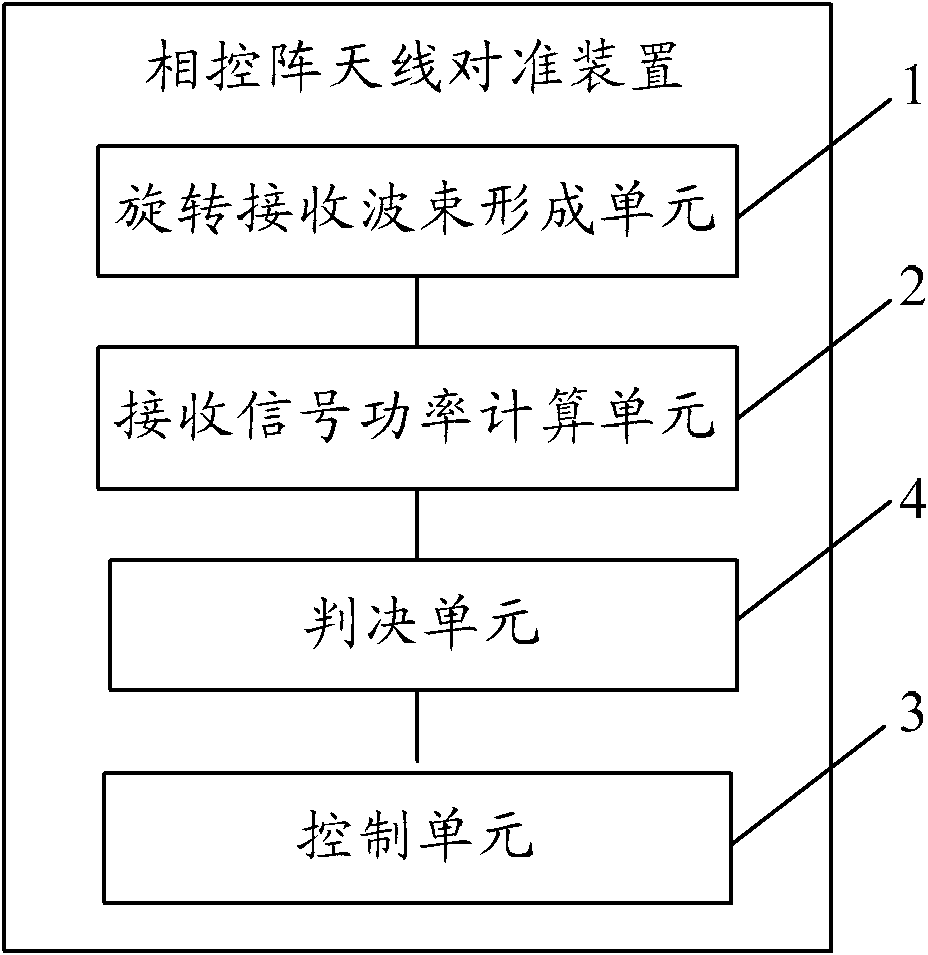Phased array antenna alignment method and device and phased array antenna
A phased array antenna and alignment device technology, applied in the field of communication, can solve problems such as low automation, low precision, and slow speed, and achieve the effect of high automation and improved work efficiency
- Summary
- Abstract
- Description
- Claims
- Application Information
AI Technical Summary
Problems solved by technology
Method used
Image
Examples
Embodiment 1
[0036] Phased array antenna (Phased array antenna) is an antenna that uses electronic control to change the phase of the radiating elements in the array, so that the beam scans the space as required. It changes the shape of the pattern by controlling the feeding phase of the radiating elements in the array antenna. Controlling the phase can change the direction of the maximum value of the antenna pattern to achieve the purpose of beam scanning. The pattern shows the directional characteristics of the energy transmitted (or received) by the antenna. The characteristics of the energy transmitted by the antenna are expressed by the transmission pattern, and the characteristics of the energy received by the antenna are expressed by the reception pattern. Generally speaking, the shapes of the transmit pattern and the receive pattern of an antenna coincide. The scanning speed of the phased array antenna beam is high, the feeding phase is controlled by an electronic computer, and th...
Embodiment 2
[0054] This embodiment provides a phased array antenna alignment method, such as Figure 4 and Figure 5 As shown, the method includes:
[0055] Step 201, initialize the direction of the transmit / receive beam to be the normal direction of the plane where the phased array antenna is located. The direction of the transmit / receive beam 51 here is the direction of the phased array antenna.
[0056] Step 202, initialize the direction of the rotating receiving beam 11 as (θ, φ), where,
[0057] θ represents the angle between the rotating receiving beam 11 and the transmitting / receiving beam 51, that is, the deflection angle relative to the transmitting / receiving beam 51. In this embodiment, θ is greater than 0°, and the preferred value range is 0<θ<90° ;
[0058] Since when the angle θ between the receiving beam and the local transmitting / receiving beam is a certain value, if the width of the main lobe of the antenna is relatively wide, the fluctuation range of the collected dat...
Embodiment 3
[0075] This embodiment provides a phased array antenna alignment device, such as figure 2 and image 3 As shown, the device includes: a rotating receiving beamforming unit 1, a receiving signal power calculating unit 2 and a control unit 3, wherein:
[0076] The rotating receive beamforming unit 1 is used to receive signals from each antenna array subunit; phase-shift the signals from each antenna array subunit, and combine the phase-shifted signals from each antenna array subunit to obtain a first signal, the receiving beam corresponding to the first signal is a rotating receiving beam;
[0077] The rotating receiving beam takes the transmitting / receiving beam as a rotation axis and rotates around the transmitting / receiving beam at a preset angular frequency.
[0078] like Figure 8As shown, the rotating receiving beamforming unit of this embodiment includes: a plurality of phase shifters 12, a power divider 13 and a beam pointing control module 14, wherein the power divi...
PUM
 Login to View More
Login to View More Abstract
Description
Claims
Application Information
 Login to View More
Login to View More - Generate Ideas
- Intellectual Property
- Life Sciences
- Materials
- Tech Scout
- Unparalleled Data Quality
- Higher Quality Content
- 60% Fewer Hallucinations
Browse by: Latest US Patents, China's latest patents, Technical Efficacy Thesaurus, Application Domain, Technology Topic, Popular Technical Reports.
© 2025 PatSnap. All rights reserved.Legal|Privacy policy|Modern Slavery Act Transparency Statement|Sitemap|About US| Contact US: help@patsnap.com



